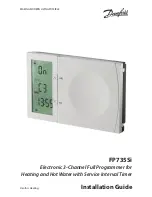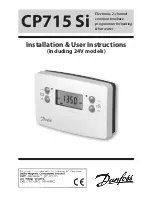
5
1. Before mounting the master or slave controller, write down the Master ID/serial number for them. This number is located on the
back of the unit. It is the upper right-hand number and is indicated by ID#. Find a suitable mounting place for the main controller.
Mount it securely.
2. GROUNDS
– Proper grounding is essential to a microprocessor controlled progressive nitrous controller. The Launcher has two
ground wires that need to be connected. Proper practice is as follows:
Ground #1
– 12 gauge black ground cable – Install this to a good chassis ground that is grounded securely to the battery as well.
Ground #2
– 18 gauge black ground wire – Install this to a “CLEAN” ground point in the vehicle.
IMPORTANT!
A “clean” ground is a ground point that does not have “dirty” ground attached directly to that point. “Dirty” ground items
consist of any ignition product as well as the 12 gauge black ground cable from the Launcher. “Clean” grounds are
grounds that go to sensors or other microprocessor controlled
devices. Do NOT “stack” clean grounds to the same
stud/ground point that you attach “dirty” ground wires to. It is acceptable to run a single ground cable from the battery
to a ground buss bar (multiple ground studs). Stack “dirty” grounds to one point/stud and attach “clean” grounds to a
separate point/stud.
3. Connect the main 8 pin connector to the controller.
4. Connect the white wire to a +12v fused switched power source. You should install this to a circuit that has a 5A fuse and can
supply two amps to the unit. If this is not available you should install a fuse holder.
5. Connect the green wire to the RPM pickup point. You will define the proper RPM conversion in the software setup. This wire can
go to the
typical “tach out” output found on most ignition boxes and some distributors (12v square wave). For DIS equipped
vehicles it can be connected to one of the individual coil signal wires which is typically a ground trigger. For specific applications
consult a factory service manual.
6. The Whit
e/Blue wire is the “Input 1” wire. This is the trigger wire for the system. Connect to either a 12v or ground microswitch
input or it can be connected to the signal output wire on a TPS with either a rising or falling voltage. The signal type is selected in
the software configuration. If you are not sure which wire this is, consult a factory service manual.
7. The White/Red wire is
the “Input 2” wire. It can be used to activate additional stages or disable a stage. Connect to either a 12v
or ground microswitch input or it can be connected to the signal output wire on a TPS with either a rising or falling voltage. If this
wire will not be used, heat shrink the end and secure it tightly out of the way. See section 4.2 in
the software on more information
regarding how to active multiple stages.
8.
The Yellow and Orange wires are General Purpose Outputs (GPO’s) that are programmable in the software for various purposes
such as activating a timing retard, etc. These are low current ground outputs. If using to trigger a high current device (over 1
Amp), use them to trigger a relay. If you need a +12v output trigger, use this ground GPO to trigger a relay that will 12v.
If these wires will not be used, heat shrink the end and secure it tightly out of the way.
9. The 12 ga Blue and Red wires are the solenoid ground outputs. The system works by providing a
ground
to the solenoids.
These wires are to be connected directly to the solenoids. Power must be supplied separately to the solenoids by utilizing an
appropriate relay. See figure 1.
10. The three pin connector on the main controller is for an optional nitrous pressure sensor input (PN 15661NOS). This kit includes
the pressure sensor transducer and cable. Install the sensor at the bottle and plug in the harness.
11. The four pin connector is for the USB communications cable. This cable is connected to the laptop computer in order to
communicate.
12. The vacuum line from the controller is to be used if progressive nitrous control based on engine boost is desired. It needs to be
connected to a full manifold vacuum source. It can also be connected to intake manifold vacuum/boost or crankcase vacuum just
for data logging purposes as well.
13. The orange twisted pair cable coming from the unit is the NOSbus cable. This is the communications cable that the controller
uses to communicate with other devices such as an additional slave controller, wide band oxygen sensor controller, as well as the
hand held and touch screen LCD controllers. NOSbus devices are connected in a serial manner. The short terminator jumper
harness must be connected to the master controller first (short orange wires with a blue lock tab). Orange jumper harnesses are
connected between all the NOSbus devices. The last unit in series must have the NOSbus line capped with a terminator plug.
This is a single plug with a blue lock tab. See section 2.5.
2.2 Hand-Held Controller and Touch Screen LCD Wiring Installation
1. If the Hand-Held Controller or Touch Screen LCD is used, it should be installed and wired at this time. These units have a power and
ground wire as well as NOSbus connection. Connect the white power wire to a fused switched 12 volt power source. Connect the
black (ground) wire to a good chassis ground. See figure 1. The optional toggle switch can be installed if the user wishes to not have
the LCD and/or main controller powered at all times.




































